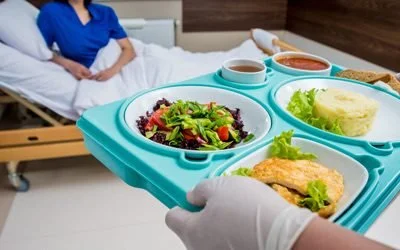Optimizing Mealtime Delivery in Long-Term Healthcare Facilities for Better Health Outcomes
By Amani Ezzo, Director of Menu Services
In long-term healthcare facilities, ensuring that mealtime delivery is efficient and well-coordinated is crucial for the well-being of residents. The timing of meals can significantly impact medication effectiveness and wound healing, making it imperative to optimize the process. Additionally, the temperature at which meals are delivered plays a critical role in patient intake and overall health.
Making sure medicines work well means giving them at the right time. If some medicines need to go with meals, it's extra important to serve those meals without delays that mess up the medication schedule. This is a big deal, especially for insulin users, as delays in their meals can make their blood sugar drop dangerously low (hypoglycemia). Certain medications require specific timing with meals to maximize their absorption and minimize potential interactions.
Proper nutrition plays a vital role in wound healing. A delay in mealtime delivery can negatively affect residents' nutritional intake, slowing the healing process.
Cold meal delivery can lead to reduced patient intake, as many residents may prefer warm or hot meals. Some foods may lose their desired texture and flavor when served cold, further decreasing patient satisfaction and intake. Residents are more likely to enjoy and benefit from meals that are served at an appropriate temperature, enhancing their overall comfort and well-being.
Optimizing Trayline Timing for Temperature-Controlled Meals
Regularly check and record meal temperatures to ensure they meet safety and quality standards. (thermometer tips link)
Enhance communication between dietary staff, kitchen, and nursing to ensure accurate trayline timing.
Establish a feedback system to report any delays or issues during trayline preparation.
Encourage cross-training among staff from different departments. When kitchen staff understand the challenges and priorities of nursing, and vice versa, it fosters a better understanding of the needs of each department.
By emphasizing the importance of timing, temperature control, and efficient trayline processes, long-term healthcare facilities can improve the overall quality of care, enhance patient intake, and support better wound healing

